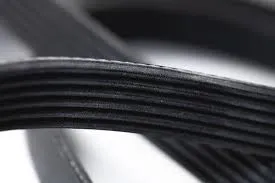- Arabic
- French
- Russian
- Spanish
- Portuguese
- Turkish
- Armenian
- English
- Albanian
- Amharic
- Azerbaijani
- Basque
- Belarusian
- Bengali
- Bosnian
- Bulgarian
- Catalan
- Cebuano
- Corsican
- Croatian
- Czech
- Danish
- Dutch
- Afrikaans
- Esperanto
- Estonian
- Finnish
- Frisian
- Galician
- Georgian
- German
- Greek
- Gujarati
- Haitian Creole
- hausa
- hawaiian
- Hebrew
- Hindi
- Miao
- Hungarian
- Icelandic
- igbo
- Indonesian
- irish
- Italian
- Japanese
- Javanese
- Kannada
- kazakh
- Khmer
- Rwandese
- Korean
- Kurdish
- Kyrgyz
- Lao
- Latin
- Latvian
- Lithuanian
- Luxembourgish
- Macedonian
- Malgashi
- Malay
- Malayalam
- Maltese
- Maori
- Marathi
- Mongolian
- Myanmar
- Nepali
- Norwegian
- Norwegian
- Occitan
- Pashto
- Persian
- Polish
- Punjabi
- Romanian
- Samoan
- Scottish Gaelic
- Serbian
- Sesotho
- Shona
- Sindhi
- Sinhala
- Slovak
- Slovenian
- Somali
- Sundanese
- Swahili
- Swedish
- Tagalog
- Tajik
- Tamil
- Tatar
- Telugu
- Thai
- Turkmen
- Ukrainian
- Urdu
- Uighur
- Uzbek
- Vietnamese
- Welsh
- Bantu
- Yiddish
- Yoruba
- Zulu
dec . 10, 2024 18:57 Back to list
Understanding the Importance of Steering Belts in Automotive Performance and Safety
The Importance of Steering Belts in Automotive Engineering
In the realm of automotive engineering, the significance of each component in a vehicle's functioning cannot be overstated. Among those components, the steering belt plays a crucial role, significantly impacting not only the vehicle's steering mechanism but also the overall driving experience. Understanding what a steering belt is, its functions, and its maintenance can provide valuable insights for both car enthusiasts and everyday drivers.
What is a Steering Belt?
The steering belt, often referred to as the power steering belt, is an essential part of the power steering system. This belt connects the engine's power steering pump to the engine itself. The primary function of this belt is to transfer power from the engine to the pump, allowing for the proper functioning of the power steering system. While modern vehicles may employ electric steering systems that do not use belts, the majority of older and some newer models still rely on hydraulic power steering, making the steering belt an indispensable component.
Functions of the Steering Belt
1. Power Transfer The primary role of the steering belt is to facilitate the transfer of mechanical energy from the engine to the power steering pump. As the engine runs, the belt rotates, driving the pump and enabling it to supply pressurized fluid to the steering gear.
2. Improving Maneuverability A functional steering belt ensures that the power steering system operates efficiently, allowing for enhanced steering precision and ease of maneuverability. This is particularly important when navigating tight corners or parking.
3. Reducing Driver Effort One of the significant advantages of a power steering system is the reduction of physical effort required to turn the steering wheel. The steering belt plays a crucial role in this aspect by ensuring that the power steering pump provides adequate hydraulic pressure, assisting the driver in steering the vehicle with minimal effort.
Common Issues with Steering Belts
Like any mechanical component, steering belts are subject to wear and tear. Common problems include
steering belt

- Belt Slippage Over time, the belt may lose its grip due to wear, leading to slipping. This may result in decreased power steering performance, making it harder to steer the vehicle. - Cracks or Fraying A prolonged lifespan can cause the steering belt to develop cracks or fraying. This deterioration can lead to complete failure of the belt, resulting in loss of power steering and potentially dangerous driving conditions.
- Noise A failing steering belt may produce squeaking or grinding noises, especially when turning the steering wheel. Such sounds should not be ignored, as they may indicate impending belt failure.
Maintenance of the Steering Belt
Proper maintenance is crucial to prolonging the life of the steering belt and ensuring optimal vehicle performance. Regular inspections should be part of any vehicle maintenance routine. Here are some essential tips
1. Visual Inspection Periodically check the steering belt for any visible signs of wear such as cracks, fraying, or signs of lubrication residue. If any defects are detected, the belt should be replaced immediately.
2. Tension Checks The tension of the steering belt should be properly adjusted. A belt that is too loose may slip, while one that is too tight can cause undue wear on the pump.
3. Professional Servicing It is advisable to have a qualified mechanic inspect the power steering system during regular service intervals. They can ensure that both the steering belt and the power steering pump are in working order.
Conclusion
In summary, the steering belt is a vital component for vehicles utilizing hydraulic power steering systems. Understanding its function, common issues, and maintenance will empower drivers to ensure their vehicles operate smoothly and safely. Regular inspections and timely replacements can prevent minor problems from escalating, enhancing the driving experience significantly. As automotive technology continues to evolve, the fundamental importance of such components remains, highlighting the need for informed vehicle ownership. Whether you’re a seasoned car enthusiast or a casual driver, knowing more about the steering belt can make a considerable difference in your automotive knowledge and vehicle maintenance approach.
-
Upgrade Power Steering Pump Belt for Smooth, Quiet Operation
NewsAug.27,2025
-
Precision Timing Belt & Chain: Engine Performance & Durability
NewsAug.26,2025
-
Precision Lathe Drive Belts: Durable & Reliable Performance
NewsAug.25,2025
-
84.5 Serpentine Belt: Durable & Precision Fit for Your Engine
NewsAug.24,2025
-
Premium Ribbed Drive Belts for Quiet Power Transmission
NewsAug.23,2025
-
High-Performance Vehicle Timing Belt for Engine Precision
NewsAug.22,2025

